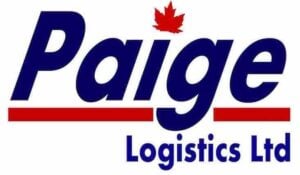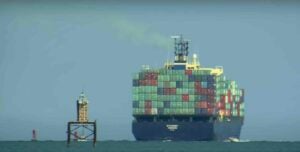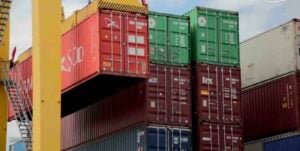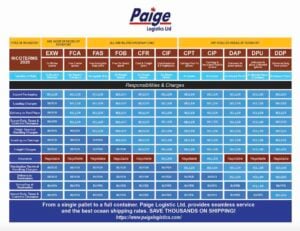agility & efficiency
Benefits of Conestoga Trailer
As the trucking industry evolves to satisfy customer demands, additional shipping options are being developed. Every shipment has unique dimensions, weight, and protection requirements.
To meet all of these needs, the trucking industry has developed a diverse selection of vehicles and trailers. The Conestoga vehicle is an excellent example of this.
When researching apparatus types such as the Conestoga, you may feel overwhelmed by the amount of information there is to learn about the complex business of transporting freight.
We cannot fault you either. As a shipper in a thriving industry, you are always looking to expand your horizons and budget.
In this article, we will cover everything you need to know in order to choose the solution that best meets your needs.
A Conestoga is a specialized type of trailer with a flexible, retractable tarp system that covers the cargo. It’s designed for easy loading and unloading from the top, sides, or rear.
Conestogas are incredibly versatile and can transport a wide range of cargo, including machinery, steel beams, electronics, and even artwork. However, they are not suitable for loose materials like sand or grain.
While flatbed trailers are more common and less expensive, Conestoga’s offer the advantage of protecting your cargo from the elements. They are also easier to load and unload from multiple angles.
Yes, the rolling tarp system of a Conestoga provides excellent protection against rain, snow, and other weather condition
Absolutely. The enclosed structure and secure tarp system make Conestoga trailers an excellent option for transporting fragile or sensitive items.
Permit requirements can vary by state and the type of cargo you’re transporting. Always check local and federal regulations before hitting the road.
The unique design allows for easy loading and unloading from the top, back, or sides. This makes them incredibly versatile for various types of cargo.
While they are versatile, they are not suitable for every type of cargo. They are also more expensive and may not be available in all locations.
Let’s dive into the fascinating world of Conestogas, shall we? If you’re in the logistics or shipping industry, you’ve probably heard of these bad boys. But are they the right fit for your business? Let’s break it down.
The Pros of Using Conestoga Truck
1. Versatility is the Name of the Game – It’s like the Swiss Army knife of the shipping world. Need to transport steel beams for a construction project? No problem. How about delicate artwork for a gallery? You got it. These trailers can handle a wide variety of cargo types, making them incredibly versatile.
Imagine you’re in the business of shipping vintage cars. It can keep them safe and secure, protected from the elements.
2. Say Goodbye to Loading and Unloading Hassles – The unique design allows for easy loading and unloading. You can load from the top, back, or sides. No more logistical nightmares trying to figure out how to get that oversized item off the trailer.If you’re shipping large machinery like tractors or excavators, the side-loading feature is a game-changer.
3. Safety First – These trailers are designed with safety in mind. The rolling tarp system ensures that your cargo is well-protected from weather conditions, theft, and damage.
Shipping electronics or other items sensitive to moisture? It offers the protection you need.
The Cons of Using Conestoga Truck
1. Not Ideal for All Types of Cargo
While these trailers are versatile, they’re not a one-size-fits-all solution. For example, they’re not the best option for transporting loose materials like sand or gravel. If you’re in the business of shipping bulk agricultural products like grain, you might want to look elsewhere.
2. The Cost Factor
Quality comes at a price, and Conestogas are no exception. The initial investment can be quite high, especially when compared to traditional flatbed trailers. If you’re a small business owner just starting in the shipping industry, the cost could be a significant factor to consider.
3. Limited Availability
Conestogas are specialized equipment, and not all shipping companies offer them. This could limit your options when it comes to choosing a logistics partner. If you’re located in a rural area, finding a local shipping company that offers this type of trailers could be a challenge. Remember, the right shipping solution can make or break your logistics game. Choose wisely!
Leveraging Conestoga Trailers for Business Success
Ever wondered how you can optimize your shipping and logistics operations? Well, today is your lucky day because I’m going to spill the beans on one of the industry’s best-kept secrets:
Let’s kick things off with some real-world applications. Imagine you’re a carrier who specializes in transporting sensitive electronics. You’re constantly worried about weather conditions, right? Enter Conestoga trailers. With their retractable tarp systems, you can easily protect your cargo from the elements.
Case Study:
ABC Electronics switched to Conestoga trailers for their electronics shipping and saw a 20% decrease in damaged goods. Not only that, but they also managed to increase their delivery speed by 15% because of the versatile system enabled loading and unloading became a breeze.
Industries That Benefit Most
Now, you might be thinking, “That’s great, Alex, but I’m not in the electronics business.” Don’t worry; Conestogas are incredibly versatile.
1. Construction Industry: Need to transport large machinery or building materials? Conestoga trailers can handle it.
2. Automotive Sector: Got some vintage cars that need special care during transport? Conestoga’s got you covered.
3. Agriculture: Need to move large quantities of produce? The easy loading and off-loading will save you time and money.
Loading and Offloading Techniques
Are the loading and offloading times affecting your delivery schedules?
Traditional flatbed trailers can be a hassle. You need extra manpower to secure the goods, and it’s time-consuming. With Conestoga trailers, the tarp system can be easily retracted, allowing forklifts to do all the heavy lifting.
Pro Tip:
Always make sure your goods are evenly distributed before securing the tarp. This ensures a safer and more efficient transport.
Understanding the Conestoga Truck?
The Conestoga truck, a form of covered wagon used to transport goods across North America in the 18th and 19th centuries, inspired the name of these trailers. They have a unique design that simplifies loading and unloading, and they are typically used to transport large, hefty loads.
Thanks to technological advancements, they are equipped with GPS tracking and real-time monitoring to ensure efficient and secure transportation. The sliding tarp system makes loading and offloading cargo significantly easier and it makes it simple to conceal cargo when discretion is required.
Due to technological advancements, trucks that are ideal for long-distance freight transport are now more secure and efficient with tailgate lift service. Finding the appropriate trailer is crucial if you want to save money and deliver your cargo swiftly and securely. To assist you in making the best decision, we have compiled a number of short facts and figures.
The tarping system is best known for a few distinctive characteristics:
- It is one of the few protective shipping techniques that supports loading from the side and the top. For loading and unloading needs, the tarping can fully retract.
- Contrary to open deck trailers, a Conestoga’s curtain shields the cargo from potential damage from the weather or road debris while it is being transported.
- Should it be necessary for security reasons, the tarping system can conceal what is being shipped.
- Considered a well-liked option for moving big and heavy loads like machinery, equipment, and vehicles.
- Capable of hauling up to 44,000 pounds and it has a retractable tarping system that runs the entire length of their decks.
However, which trailer model is best for your shipment?
A shipping company that frequently transports perishable products or refrigerated freight may opt to use a Conestoga equipped with refrigeration capabilities and temperature-control technology to ensure the cargo arrives in pristine condition.
This form of trailer’s reinforced walls and floors, as well as GPS tracking and real-time monitoring, make it ideal for transporting large pieces of machinery across the country.
What are the advantages of Conestoga Freight Carrier ?
In order to provide their customers with better goods and services, trucking service providers are constantly looking for new and improved methods. The benefits of using a Conestoga to transport their freight are well known to shippers.
As they save money, meet deadlines, and find their product intact after a successful transit, their dedication to these trailers only grows. It’s time you understood why these shippers prefer to transport cargo inside Conestoga’s tarped walls. The top three ways these trailers draw attention to themselves are as follows:
Decreased Risk for Damage
First off, the tarped walls shield the goods inside from weather elements, lowering the possibility of damage occurring while they are being transported.
Second, these trailers are a popular option for shippers who deal with a variety of freight because they are versatile when it comes to loading and unloading cargo.
Sending open-deck freight, such as steel, building supplies, machinery, or another good, under tarps is the most popular substitute for the Conestoga.
Tarping cargo is a great technique to keep things dry, but it might damage delicate objects. Scratching, pinching, and crushing can occur when tarps are securely tied to goods.
Understandably, damaged goods hurt transportation businesses and their customers. Conestogas may fully encapsulate products without touching them, preventing in-transit damage.
Advantages of Conestoga vs Dry Van Trailers
Truckers can also save time by rolling back their Conestoga’s canvassing system while utilizing one for freight. Tarps are awkward and time-consuming. All flatbed vehicles suffer from the same issue.
Flatbed trailers can only load cargo from the rear. Crane loading and side loading are not possible on a flatbed trailer. When cargo has specific specifications, Conestogas beat flatbeds. All flatbed vehicles suffer from the same issue.
Types of Conestoga Trailers?
The staple feature of these trailers is the tarping system — deployed to cover cargo in transit and retracted to load/unload. Because of this, is offered in many shapes and sizes. Each iteration of the trailer offers different services and fits unique use cases.
They are specialized trailers with a tarping system deployed to cover cargo in transit and retracted to load/unload. Each type offers different services and fits unique use cases. Note, the specifications of each trailer vary slightly from one to the next. Always consult your provider to find out the exact specs of your trailer.
All Conestoga freight trailers have at least one thing in common: their tarping system. This tarping is used to cover the freight during transit and helpfully retracts to make loading and unload more convenient. It’s made even more versatile by coming in a few different shapes and sizes.
Below, we’ve listed the most common types:
- Conestoga flatbed trailer
- Double drop Conestoga
- Stepdeck Conestoga
- Roll Tite
Each of these has its advantages and services, great for fitting to every unique shipment. These specialized trailers should not be overlooked for many shipments. Keep in mind that the exact specifications of each trailer can vary slightly depending on your provider; contact your provider to get more information.
Conestoga vs. Flatbed Trailers
The flatbed Conestoga trailer is the most prevalent variety. These unique flatbed trailers are available in 48 and 53-foot versions and are used to transport many of the same open-deck goods as the conventional flatbed.
Although these trailers’ sizes differ slightly from one another, you can use the following general guidelines as a guide.
Flatbed Conestoga Trailer Dimensions
The most popular flatbed model is available in lengths of 48′ conestoga and 53 feet, but these trailers are available in a wide range of shapes and sizes.
The Double Drop Conestoga, in contrast, features a lower deck height of about 18 inches and a sliding tarp system that allows it to support loads up to 11 feet tall. These trailers provide flexibility and weather protection for items with open decks.
- Dimensions: Available in 48 and 53-foot lengths, usually 8′ 4″ inches wide and 96″ high.
- Weight Capacity: Up to 44,000 pounds.
- Features: Versatile and easily unloaded, ideal for open deck commodities and larger cargo.
Double Drop Conestoga Trailers
These are ideal for transporting taller loads, such as machinery, heavy equipment, and construction materials.
Their decks are lower than those of the flatbed Conestoga, giving them more room for taller cargo. The load is protected from the elements while being easily accessible thanks to an inventive sliding tarp system.
Double Drop Conestoga Trailer Dimensions
- Dimensions: Standard length is 48′. Front deck height is 96″, lower deck goes up to 139″, and the rear deck is 114″ high.
- Weight Capacity: Up to 35,000 pounds.
- Features: Ideal for oversized equipment needing extra height or multiple loading docks.
Although the Double Drop Conestoga’s dimensions can change, they typically have a lower deck height of about 18 inches and can support loads that are up to 11 feet tall.
This innovative layout makes it simple to load and unload tall objects while still offering weather protection thanks to the sliding tarp system.
Step-Deck Conestoga
Also known as the “drop-deck,” this bad boy is for when you’re dealing with taller loads. It’s like the flatbed’s taller, more sophisticated cousin. Perfect for when you’re transporting equipment that just won’t fit on a standard flatbed.
Transporting items that need a higher height capacity than flatbed trailer option can offer is done with step-deck Conestogas (96 inches). Step-deck Conestogas are used to transport taller cargo like CNC machinery, helicopters, robotics, and other large freight in circumstances where in-transit protection is a concern. The following table lists the dimensions of the step-deck in both its 48′ conestoga and 53′ conestoga versions.
- Dimensions: Available in 48′ and 53′ lengths. The upper deck height is 96″, while the lower deck can go up to 110″ in height.
- Weight Capacity: Up to 41,000 pounds.
- Features: Suitable for goods requiring higher height capacity, such as machinery and large items.
48-Foot Step-Deck Conestoga
Is a lower deck height of roughly 40 inches and an upper deck height of 60 inches, with a weight capacity of up to 48,000 pounds. The sliding tarp system provides weather protection for taller loads while also allowing for easy loading and unloading.
53-Foot Step Deck Conestoga
The step deck conestoga dimensions has higher height capacity, with an upper deck height of 72 inches and a lower deck height of about 42 inches. This step-deck model is a great option for bigger and heavier loads because it can transport up to 55,000 pounds of freight.
The sliding tarp system on the 53-foot model is additionally intended to give the cargo the maximum amount of protection while still enabling simple access for loading and unloading. Overall, step-deck Conestoga is a great option for moving tall and oversized cargo, offering businesses in a safe and effective solution.
- Upper Deck Height Capacity 8′(96”)
- Upper Deck Length 10′
- Lower Deck Height Capacity 9′ 8″ (116”)
- Lower Deck Length 43′
- Overall Width Capacity 8′, 4″(100”)
- Weight Capacity 41,000 lbs 10’0″L x 8’4″W x 8’H (upper deck)
Advantages and Limitations
Advantages
Lower Risk of Damage: The tarping system offers flexible protection for various types of cargo.
Versatility: Suitable for a wide range of materials and goods.
Efficient Loading and Unloading: Allows for side and top loading, making the process quicker and more convenient.
Limitations
Weight Capacity: Generally lower than standard flatbed trailers.
Dimensional Capacity: The tarp system limits the height of the load.
Cost: Higher upfront investment compared to traditional trailers.
What is a Curtainside Flatbed Trailer?
The common name for this kind of vehicle is a “tautliner,” also referred to as a curtain-sided trailer. It is the most common kind of trailer in the haulage industry and used to transport a variety of goods that can be loaded or unloaded from the side with the “curtain” open.
Conestoga’s curtain offers an all-natural solution for open-deck trailers, like the typical flatbed, that need to be tarped to protect cargo while being transported. These trailers typically carry big, heavy loads and have a distinctive design that makes loading and unloading simple.
Roll Tite Flatbed Trailer
Roll-tite trailers, also known as conestoga, are flatbed trailers equipped with a retractable rack and curtain system.
The entire rack can be moved back and forth to load freight with a forklift and then protect the conestoga loads once it has been secured and is ready to be shipped.
Roll tite trailer and curtain-siders are also available for step decks and double drop trailers too.
The Gooseneck Conestoga trailer
Found with an upper deck height of 72 inches and a lower deck height of approximately 42 inches, is a great choice for moving taller and heavier loads.
It has a sliding tarp system to protect the cargo while still allowing for simple loading and unloading.
It can carry up to 55,000 pounds of freight. However, a curtainside trailer, also referred to as a side-load trailer, is an option if you need to transport items that can be loaded or unloaded from the side.
In general, conestoga trucking companies offers a natural solution for goods where other open-deck trailers, like the standard flatbed, need to be tarped to protect commodities in transit.
The curtain can be fully retracted to accommodate requirements for side-loading and side-unloading of products.

Author & Chief Executive Officer at Paige Logistics Ltd. → Experienced Operations Manager with a demonstrated history of working in the Transportation, Trucking and the Railroad Industry.
Related Posts
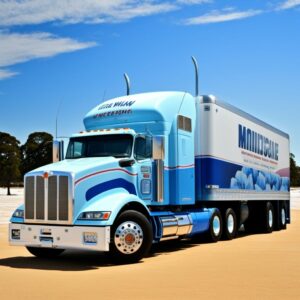
Temperature-Controlled Shipping
Discover the secret to keeping your perishable products fresh and safe during transit with temperature-controlled shipping.

Shipping from Canada to the USA
Paige Logistics will ensure that your clients receive the best possible pricing for freight US to Canada. A Canada freight quotation will provide you with complete transparency, including all Canadian taxes and charges.
